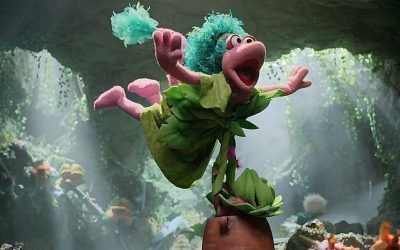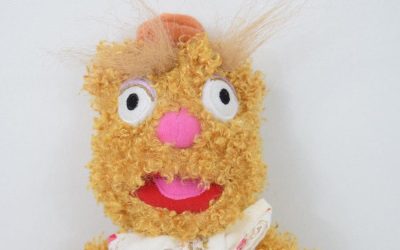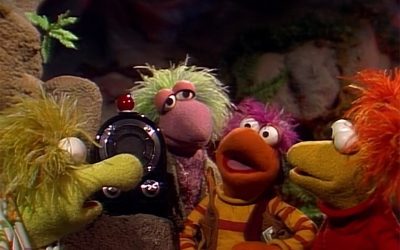This is part two of a three-part interview. Click here to read part one. Read on for part two, in which Mark Saltzman talks about writing for The Jim Henson Hour (and why it didn’t work) and The Muppet Show: On Tour!
[Note: This interview was conducted over the course of two conversations and has been edited for clarity.]
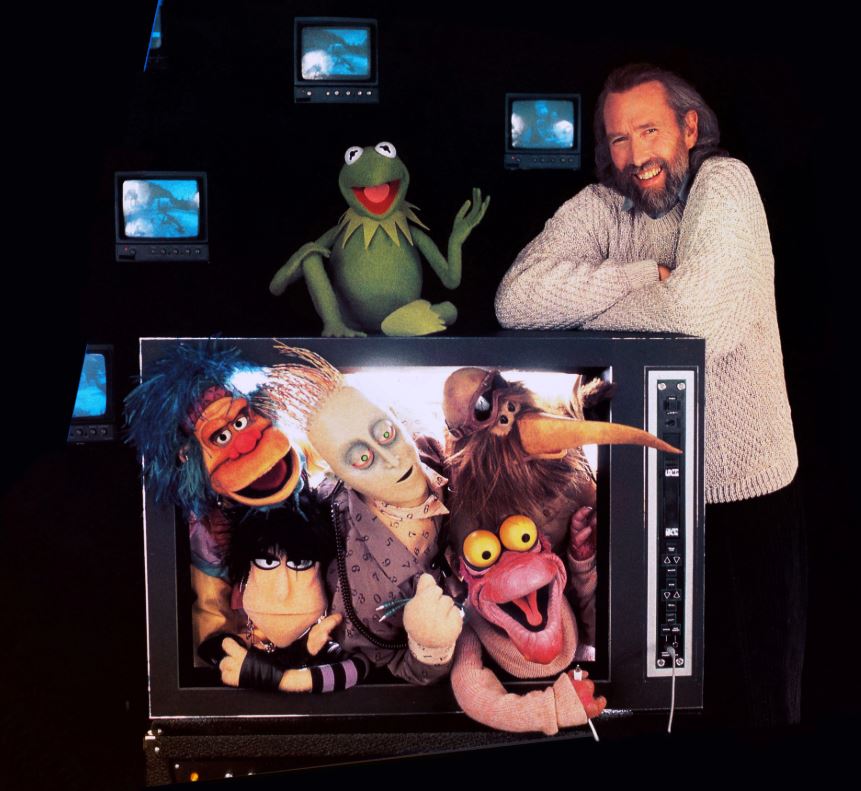
TP: Moving on a little bit, you were one of the writers on The Jim Henson Hour.
MS: I was. The ill-fated Jim Henson Hour.
TP: It was a brilliant show. Probably a little bit ahead of its time.
MS: You know, there was a recent Muppet thing that was on ABC…
TP: The sitcom.
MS: Yeah. There was always this feeling that the Muppets weren’t “network.” They kind of hovered on the edge of PBS and syndication, and there was something subversive about the Muppets that way. Like prime time is not ready for them. They blow things up, they throw things at the wall. That’s one reason, and the Sesame Street association means “Oh, this isn’t really for grown-ups. This is children’s television. What’s it doing on in prime time?”
I think the ABC show reinforced this, that the Muppets stay edgy when they’re on the edges. When it’s front and center in prime time, it’s kind of been proven that’s not really where they belong. There have been specials — I remember in the ‘90s there was a prime time 25th anniversary of Sesame Street, and I think that did pretty well. It was so packed with stars. They were taking no chances, it was just star after star to keep things moving and keep the ratings up. But you can’t do that every week. Part of that contributed to why The Jim Henson Hour didn’t have a go.
TP: Do you remember some of your specific contributions to The Jim Henson Hour? Did you create any of the new characters?
MS: Oh boy. I remember there was a Barbie doll parody. That’s all very me.
TP: Bootsie.

MS: Yeah, Bootsie. You know, it was a writer’s room, so it’s hard to say what was yours and what was mine. The Sesame Street stuff was all freelance, so as far as the contractual Writer’s Guild elements, you had a script and your name was on it. On The Jim Henson Hour, or really on a lot of network TV, if there’s a writer’s room the Guild doesn’t like a whole list of names “written by.” It works out, but generally everybody’s writing everything. There’s not the kind of individuation like writing a play or writing a song.
Yes, I look back and I think one side of my sense of humor is that gay, campy [sensibility]… Mocking Barbie dolls, I’d say that was probably a lot of me. When that Rambo doll came into that sketch [in the “Videotape” episode].
TP: Yeah!
MS: You know this stuff. I’m impressed!
TP: Oh, I’ve seen all of this. I was one of probably… not very many people who watched every episode when it aired on TV, and just being a Muppet fan, we held onto our tapes over the years.
MS: Yeah. You may have it more at your fingertips… I don’t know, it’s something I don’t have in my head a lot because it was a disappointment. You kind of don’t go back on that. That was ’88?
TP: It aired in ’89.
MS: Okay. Another thing when I look back on that — this is one of the last Jim Henson projects. It failed, it was one of Jim’s last things, and I just remember being sick all the time with the flu. I haven’t replayed it. I think it was also not a great time for the company, and then the sale to Disney happened not long after, right?
TP: Right, it was within a year that Henson started working on the sale to Disney.
MS: If that show had been a TV blockbuster, that could have changed the path of the empire in a way. You know, you sort of wish that when Jim died that it had been on a real upswing of everything — that this show had been a hit, that Dark Crystal and those movies had been [as successful as] Star Wars.
If he had lived, I think these things go through their curves up and down, but this was not an up at that point, and it’s just one of the sad things of his whole life. He was so young, and this Disney thing was coming at him, and The Jim Henson Hour… It should have been better. And I know it would have. You think of the kind of movie that he would have gone on to do.
TP: And with the technology of today. The Jim Henson Hour, especially, was very high-tech and showcasing the current technology. So just to think about what he could have done…
MS: I remember that being an issue, now that you mention it. There was a lot of talk: “No, no, no, the charm of the Muppets is the low-tech.” The magic of Kermit is he’s this green washcloth with ping-pong balls. Why do I care about him? The high-tech was what was going on underneath, the video monitors that the puppeteers used to see themselves. That was kind of a breakthrough from earlier TV, so now you could have absolute camera contact and eye contact between the characters, which is movie acting. But what was visible was felt and feathers.
Now that you mention it, I remember it was like, “Oh, there’s all these tech goodies.” Jim was sort of enchanted by all this cutting-edge tech. Now I’m thinking, who was the other side? Who was saying “No, no, no?” I think I can hear myself saying it: “All that technology is cold and the Muppets are warm. This stuff is smooth and shiny and the Muppets are scratchy. This just doesn’t fall in together.”
If you think of Star Wars at the very beginning, it was technology but the people and storylines were very retro, from Saturday morning serials. It was that combination of new technology in hyperspace but using the hoariest old tropes from Buck Rogers and Flash Gordon. That combination I always thought was the stylistic magic. It’s familiar but it’s new. It’s not threatening with the technology, it’s giving you the kindly old mentor and the farm boy with a sword. And still they don’t mess with that.
I do think that the coldness of [the high-tech effects on The Jim Henson Hour], even with the magic of technology… Really, what’s more magical than making people love a washcloth? (Laughs)
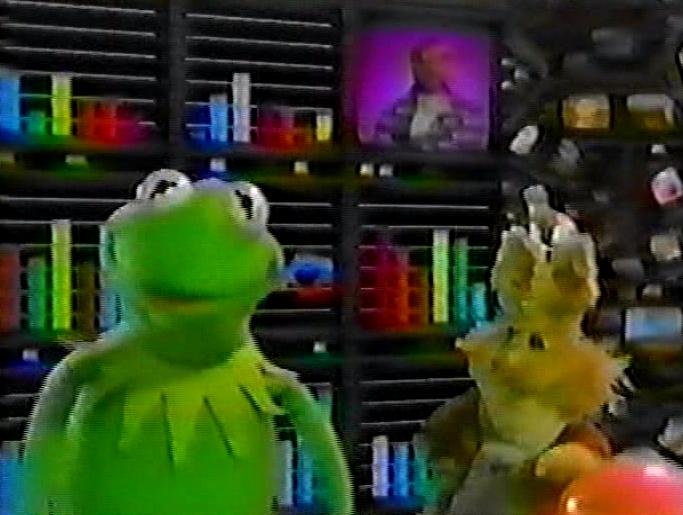
TP: Even just starting with the premise, which is that the Muppets are still doing a variety show, but they’re in this high-tech control room set, which is all done on a bluescreen.
MS: Yeah. See, when I think back on that, that was a bad idea. The Muppet Show was set in a kind of theater that didn’t exist anymore. It was a vaudeville theater, and they were doing a vaudeville show in the ‘70s. It was completely retro, what The Muppet Show was doing. And yeah, now that we’re talking about it, I’m thinking, in the ‘80s they should have been doing a ‘50s TV show, you know?
TP: Yeah, that would be interesting!
MS: Yeah, and maybe shoot it in black and white. (Laughs) That’s extreme, but if they got out of the vaudeville house and it was Kukla, Fran, and Ollie. To use all this technology to recreate old television, with that sputtery look. That might have been fun.
But I don’t think you want the Muppets with cutting-edge technology. The most memorable case of – if you call it “technology” – in all the Muppet movies to this day is Kermit riding a bike.
TP: That one always gets people.
MS: It always gets people! You think, yeah, you couldn’t do that without radio technology and whatever. But the end result was not 50,000 multiple Kermits and twisting them and seeing the world through Kermit’s eyes. It was the simplest, simplest image of Kermit riding a bike, and to get that required technology, but it was invisible.
It’s the same as how Jim gave dimples to Kermit. It’s inexplicable. The delight was getting Kermit on a bike and using all the technology and hiding it. On The Jim Henson Hour we can safely say it was not hidden. Two million screens, screens inside screens – it’s all coming back!
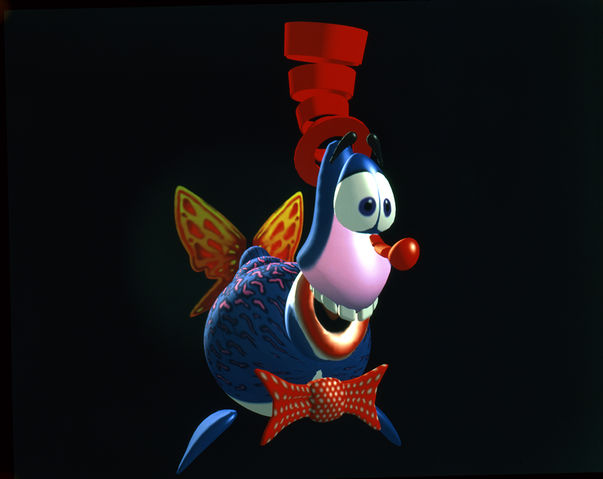
TP: Did you ever write for Waldo, the computer-animated character?
MS: That was supposed to be the big, exciting thing, and it was exciting, but when I look back on it now, what an error. That’s not a Muppet. That’s Star Wars, that kind of a gizmo creature.
TP: Yeah. It’s cool, but it’s a little bit of a novelty.
MS: It’s just not our world. Not the world of puppets with felt heads and eyes that don’t move. What I’ve learned along the way is you design the eyes so without moving they have all kinds of expression. They design them that way, so they’re slightly crossed… They have all the tricks. That kind of design is ingenious. Whereas, if I had that computer-generated gizmo, if I had $300,000 to buy one, I could do that. Yeah, but could I put Kermit on a bike?
TP: There’s still something that feels tangible about it.
MS: Yeah, and that, I think, is the magic. It feels easy in retrospect, and I think post-Star Wars everyone was so techno-hungry and crazy for it that that little creature emerged. And you had to remind me that this character existed — but I don’t forget Bert, I don’t forget Ernie.
TP: Do you remember writing for the guest stars at all?
MS: I remember k.d. lang because I was a fan. I remember how natural she was with the Muppets. Some of these performers, some of the celebs, feel very comfortable. Some of them can’t take their eyes off the puppeteers down there. You have to stop and say, “Look in Kermit’s eyes!”
TP: “Eyes up here!”
MS: It’s really hard! It’s not a question of smarts, it’s just, down there is Jim Henson!
TP: There’s a person talking, and also there’s a puppet, so you have to look at the puppet.
MS: Some people need to be reminded of that, and some people just can’t make that leap of imagination to talk to this washcloth with ping-pong balls.
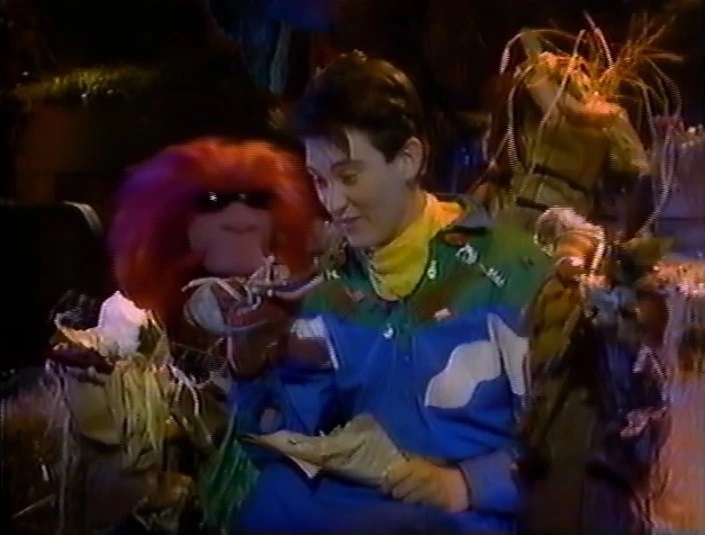
TP: k.d. lang has a number where she sings “I Love Trash” with a bunch of Muppet garbage bags. She seemed to have pretty good chemistry with them.
MS: She did! I just remember she walked into camera range and just put her arms around Muppets. She was so comfortable interacting with them as living beings. That made an impression.
TP: Ted Danson was on the show…
MS: I don’t remember being there when he taped. One of the things about taping the show in Toronto: all the Americans on the show, we didn’t have the immunity to these Canadian germs. We were in our hotel rooms getting the flu as much as we were on the production. It may have been that I was down for the count for Ted Danson.
TP: Some other guest stars: Louie Anderson, Bobby McFerrin…
MS: Louie Anderson, yeah… “My Dinner with Godzilla.”
TP: Did you write that one?
MS: Yeah.
TP: That’s a really funny sketch!
MS: We had to make it “Codzilla.”
TP: I wondered about that. That was just a copyright thing?
MS: Yeah, just to make sure it was considered parody. If you want Godzilla in your show, you probably have to license Godzilla. That such a minor note it wasn’t anything anybody argued about. It was just “Make it a parody.” He was really good and instinctive.
Bobby McFerrin, I think he had a learning curve as far as dealing with Muppets. He’s not an actor. He’s almost in a certain musician bubble when he’s performing. He’s kind of solo. How you play a scene with another actor was probably new to him at that point. I don’t know if that’s apparent onscreen.
TP: Well, one thing about the format of the show is that the guest stars are not always in the physical space as the characters because they’re on monitors. I think Bobby McFerrin has one sketch where he’s interacting with Muppets and the rest of the time he’s on monitors.
MS: Yeah, the screen thing didn’t work. I remember Dog City. That was [written by] Tim Burns, and everybody got very excited about that.

TP: Dog City is great.
MS: That seemed like “Oh, if this were only the show!” (Laughs)
TP: It must have been a very expensive production.
MS: At that point it was network finance, so you could go there.
TP: You wrote for The Muppet Show: On Tour, the live costume character show. How is that different from writing the characters when they’re puppets?
MS: Basically, those shows were for really little kids, those live shows. Part of writing those was audience participation, which just wouldn’t be a part of Sesame Street or The Muppet Show. You had to slot in places for that. That was part of what the parents were bringing the kids to do, not to sit politely with their hands folded like a young people’s concert. The point was that they were going to be jumping up and howling and screaming and having a great time. There was a number of times you had to slot that in, times that the kids could be… released.
It was interesting. In Chicago I actually went to one of them. I went with Jim, and it was the first time this edition was on its feet in front of an audience, so we weren’t figuratively taking notes, but mentally we were. I remember talking about how hard it is to pull focus on a character in that form, in an arena, without a severe follow spot and a blackout on everything else. You might not get a laugh on a joke because the kids are looking all over the place.
TP: They might be busy watching another character in the background.
MS: Yeah. When you’re working in film you just push the camera where you want the audience to see. Even in theater we have our ways, where you can pull the audience over there – all the other actors freeze, the lights dim and there’s a light on Tevye, you know. He says his speech, he gets his laughs. I remember that being harder and trying to figure that out with Jim. The lighting isn’t that sophisticated in these arenas, and it’s playing to a [prerecorded] track, and all the characters are so visually intriguing, so that seemed to be an issue. Not a life or death issue, but as we were walking out we were talking about that.
I think Jane Henson was in charge of those live shows at Muppets. That was her domain, and I remember interacting with her more in the course of the shows. It was kind of a big event for Jim to be there for quality control, but day to day it was Jane. The first draft of the script would go to Jane.
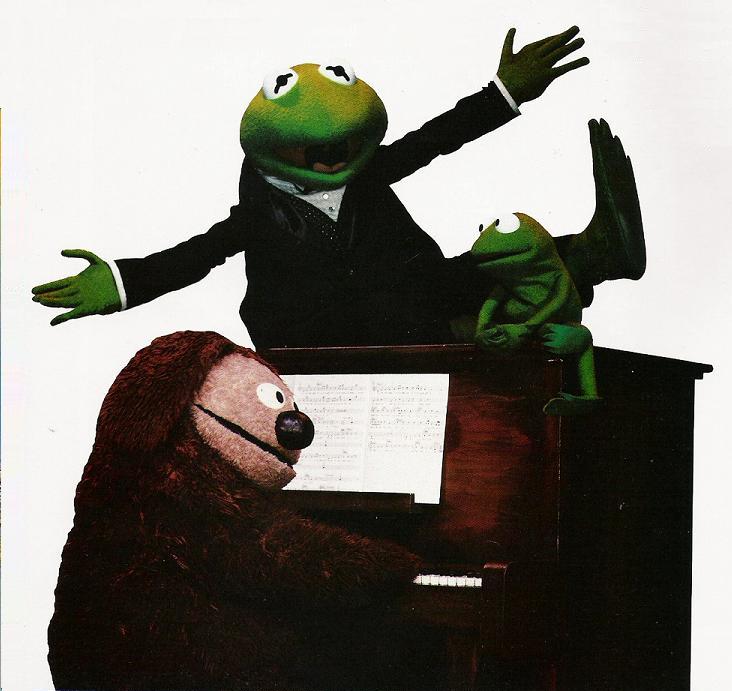
TP: Did you try to take advantage of the fact that the characters could use both their arms and move around the whole stage, as opposed to on TV?
MS: It wasn’t that big a difference. The people inside those costumes were often dancers, and the fakeheads were so big you couldn’t really have them doing somersaults, but when they’re doing a musical number you could add some dance to it that you couldn’t do on Sesame Street. Having them with legs and all that opened up dancing, but even within that, it’s pretty limited. They can do-si-do a little and do kicklines, but I’d say that’s the only element added, movement and dance.
TP: I notice on Muppet Wiki, in the program of that show, you co-wrote a number called “Rappin’ Fozzie.” Do you remember that?
MS: I don’t! [Laughs] That’s gone from my mind. What I’m thinking is “We had rap back then?”
TP: It’s 1984, so…
MS: Really early, then, like Run DMC. Are you old enough to remember that?
TP: I saw the second Muppet Show on Tour in 1985, when I was very young.
MS: You were probably jumping on your seat and participating.
TP: Oh yeah, I’m sure!
MS: It’s a weird art form… Did you see this documentary that one of David Letterman’s writers did on industrial shows?
TP: Bathtubs Over Broadway!
MS: Yes! What a great obsession he has. In the ‘70s and early ‘80s I’d gone to some of those because I’d have a friend who was dancing in them or something, and it really was something where you went and you were sort of agog at the production values. And then you forgot about it. It was just like a commercial.
It was like a smirky little thing amongst Broadway performers: “Oh yeah, I’m doing the Milliken show, I’m doing bathtubs.” Obviously it made a huge impression on this guy – and but for him, this entire ancient culture would have just disappeared without a trace. The people who did this show just started dying off.
TP: It is this very weird, specific thing, but people worked really hard on them to make them entertaining shows.
MS: And they had their stars, and those writers, and top quality Broadway stars. If you werea star on Broadway, you’re going to be offered the Milliken show. It was a few days’ rehearsal, one morning in your life because it was the breakfast show, and a huge payday. Part of what you get for being a star was the Milliken show. And they brought in good writers. It was just not for the public, so it was invisible, but this guy salvaged it.
Maybe somebody out there like yourself could figure out how this “shadow show business” with huge money and giant productions and so much affection [came about]. When did it blossom? Is it dying? Who are the stars? That’s a documentary waiting to be made. I’d watch that.
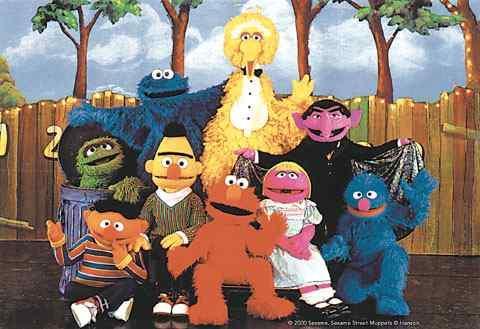
TP: They’re still doing Sesame Street Live, which has been going forever.
MS: Yeah, and beyond Sesame Street, who else is doing them? Those arena shows, when you think of those venues… What were they doing on Saturday mornings? They were probably empty. So they went, “Oh yeah, book your Sesame Street show.” You can book the Staples Center for half of what a rock band would.
TP: I never thought about that aspect of it, but I’m sure you’re right!
MS: Using that dead time, probably. That became preferable all around, and for Sesame Street Live there’s a new audience being born every second, so that might be at least, if not a documentary, something to explore.
TP: We might have to track down some of that history.
MS: I wrote the first one with Fred Newman, right?
TP: That’s what it says on Muppet Wiki.
MS: That just came back to me. He was also there with Jim when we launched it that first time in Chicago. That probably was the only one I did. Those years, between Sesame Street and the Muppets, it seemed like I was always busy on something. As a freelancer you’re not used to saying no to anything, but I really was overbooked. I can remember having to say no to Jim personally one time.
TP: Wow. Do you remember what project that was?
MS: No, I really don’t. I just remember saying, “No, I’m too busy working on Muppet stuff. I can’t meet a deadline.” And I was. I can’t think of one that I did under duress or through clenched teeth. I really did love every single one of the Muppet things. I kind of had heartache on The Jim Henson Hour because we kind of knew this was off-track from the get-go. It was grafting this long-form with a Muppet Show thing. It was trying to stitch together some things that didn’t want to cohabitate.
TP: It seems like there was a lot of compromise between his vision and what the network was asking for.
MS: It’s just the network sensibility and Muppets… I remember it was very confusing how to get the old Muppet Show sensibility onto glossy network primetime. I think the technology was supposed to be something that would help it, that would be cutting-edge.
TP: That was supposed to be the hook.
MS: Yeah, and… it wasn’t. [Laughs] But still, the writing I did – the Bootsie sketches, Codzilla – it was so much fun.
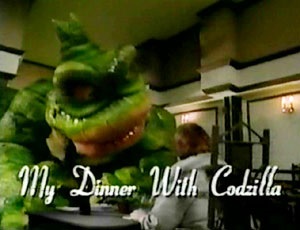
TP: It’s definitely a fan favorite. It’s maybe not as cohesive as The Muppet Show, but there’s still so much good stuff there.
MS: Within it, if you extract this sketch or that sketch. Oh, Little Women! When the new Little Women movie came out I just kept thinking of that Little Women sketch. Do you know what I’m talking about?
TP: I’m not sure!
MS: It’s like 40 seconds long, and they’re tiny. They’re Lilliputian. It’s “And now, Little Women,” and they’re tiny.
TP: Was that something where it cut to a show on one of the channels on the monitors?
MS: Yeah! And that was kind of a Masterpiece Theater of Little Women and they’re getting increasingly angry about having to live this way.
TP: I remember one where it was War and Peace. A bunch of Muppets hit each other with bats, and then it says “Next week: peace.”
MS: Yeah! Those quick blow-offs were really fun, and that tech thing of switching channels allowed you to do that stuff. Like Laugh-In, it was really fast-moving stuff that was more network-y, especially post-Laugh-In. At that point in TV history you could start doing more filmic cuts.
It occurs to me now we were probably backtracking in technology. We probably cut to ten bits like that in a row, but they were doing segues in between, and that’s dead time in network TV. It moves so fast. Now we learned, 30 years later, where the moments are. (Laughs)
TP: On a Muppet series, there’s also the stuff that’s happening backstage, between sketches.
MS: Right, and even on The Muppet Show, you just cut. You’re not traveling backstage. So that was kind of part of the problem there, was having to segue all the time from this screen to that screen when we could just be cutting. But once you were in the sketch, it was pretty good!
TP: Yeah, there’s a lot of really entertaining stuff there!
MS: I’m glad it survived somewhere.
Stay tuned for the third and final installment of this interview! Thanks as always to Muppet Wiki for images and info! Click here to talk to a washcloth with ping-pong balls on the Tough Pigs forum!
by Ryan Roe – Ryan@ToughPigs.com

